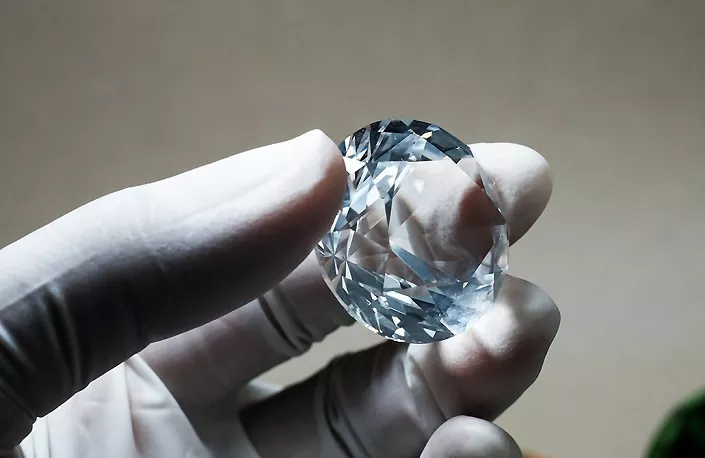In the 2023-24 Budget, Finance Minister Nirmala Sitharaman announced a reduction in customs duties on ‘seeds’ for lab-grown diamonds. This move aims to enhance diamond manufacturing in India. Additionally, the government allocated ₹242 crore to IIT Madras to establish the India Centre for Lab Grown Diamonds (InCent-LGD), which will focus on research into lab-grown diamonds (LGDs).
The process of growing diamonds is traditionally time-consuming. Using the ‘high pressure, high temperature’ (HPHT) method, discovered by General Electric in 1955, it takes about 12 days to produce a diamond. This method, which involves dissolving carbon in liquid metal under high pressure and temperature, is used to create almost all synthetic diamonds today. The carbon atoms arrange themselves into a diamond lattice as they deposit on a seed crystal, but this method does not produce large diamonds.
However, a group of Korean scientists has recently developed a faster, easier method to grow larger diamonds. In a paper published in Nature, they describe growing diamonds in just 15 minutes at 1,025°C, without using seed particles, and at ambient pressure.
Innovative Diamond Production Method
The team from the Ulsan National Institute of Science and Technology, including Indian scientist Babu Ram, created a mixture of gallium, iron, nickel, and silicon in a graphite crucible. They then introduced methane at 1,175°C. Diamonds formed at the bottom, where the liquid metal solidified, displaying rainbow colors. Using a different form of methane, 13CH4, which contains an isotope of carbon, they produced purer diamonds. The crystals were confirmed to be diamonds through Raman spectroscopy, transmission electron microscopy, and X-ray diffraction.
The scientists observed that diamonds nucleate and grow at the center of the crucible, likely due to a temperature gradient. Carbon atoms accumulated at this cooler spot, forming the diamond structure. Their experiments showed that diamonds began forming within 10 to 15 minutes, significantly faster than the 12-day HPHT process, and continued growing until around 150 minutes.
Implications and Future Research
This groundbreaking method of diamond production at ambient pressure is significant, although not yet perfect. The Korean scientists believe that tweaking the mixture of metals could improve results.
“The possibilities of exploring diamond growth with this type of approach seem promising,” they concluded in their paper.


